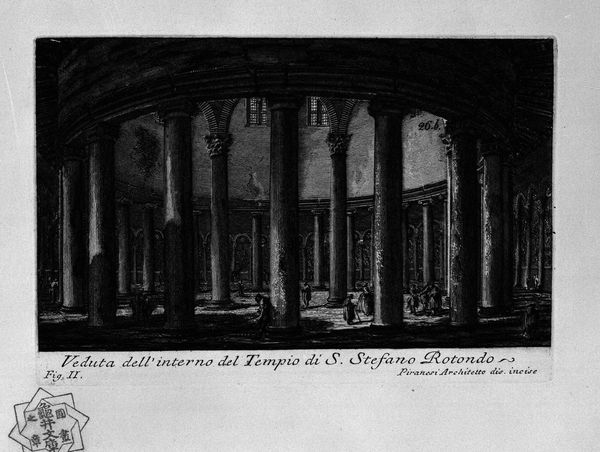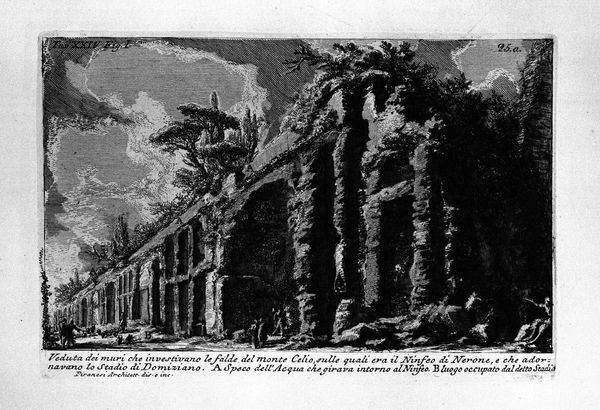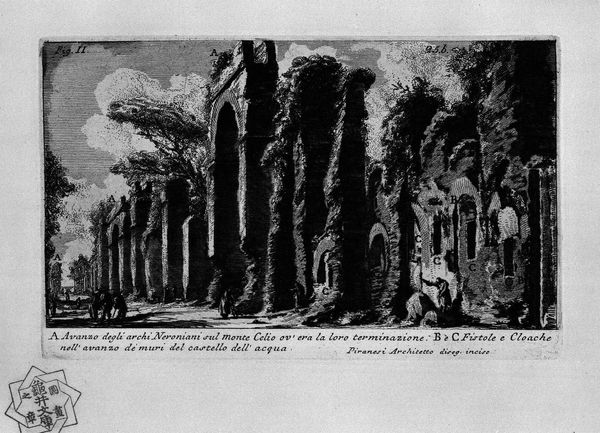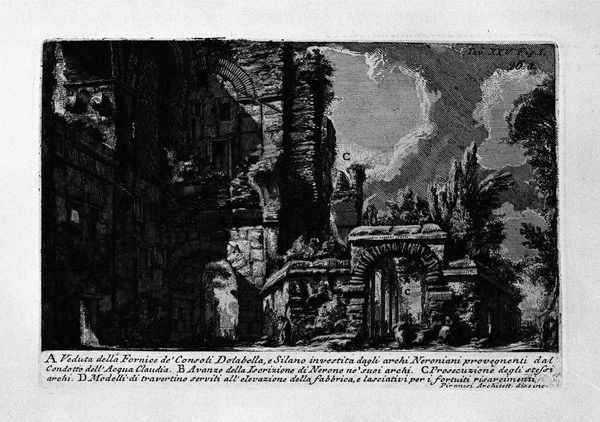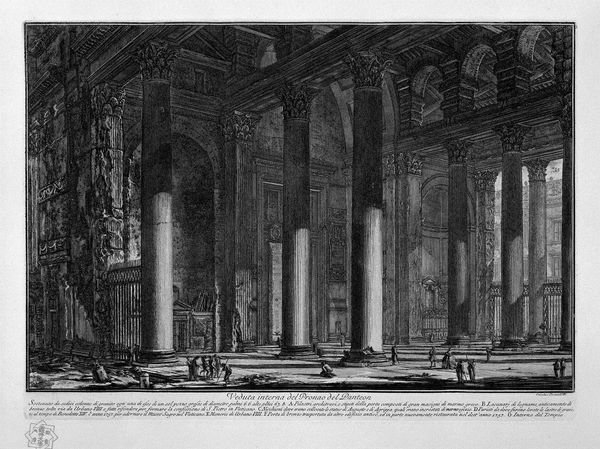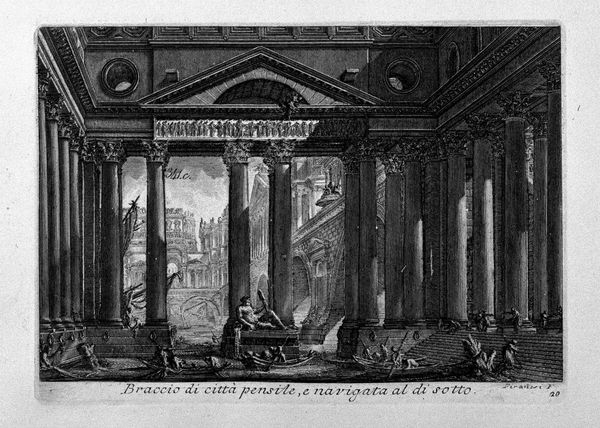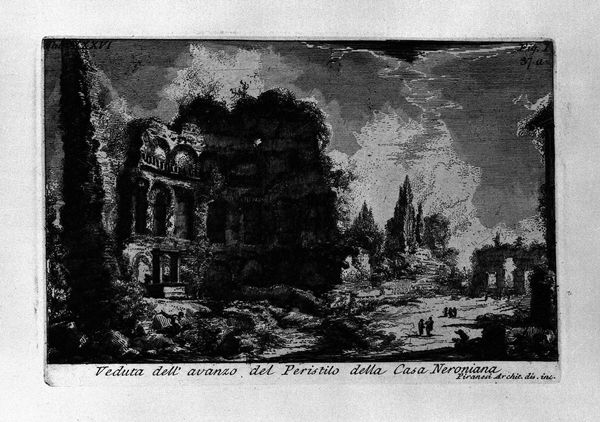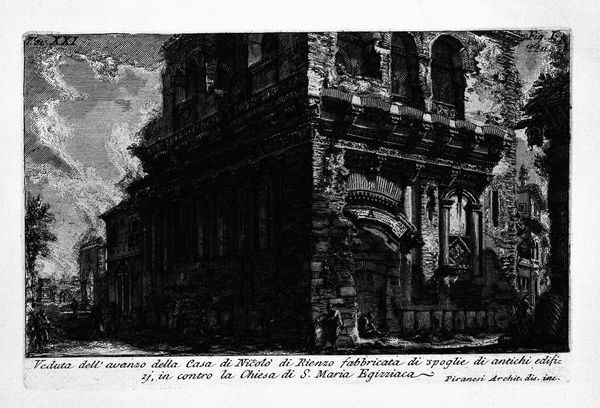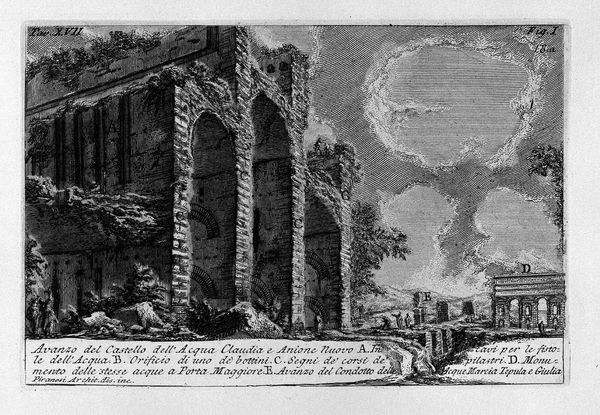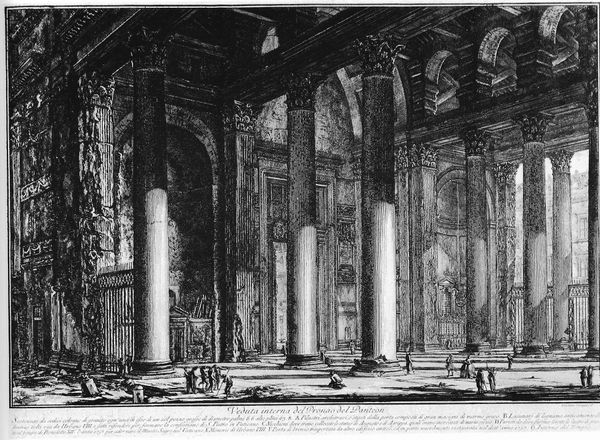
print, etching, engraving, architecture
#
neoclacissism
# print
#
etching
#
ancient-mediterranean
#
cityscape
#
engraving
#
architecture
#
realism
Copyright: Public domain
Curator: The oppressive grandeur is palpable, isn’t it? Almost suffocating… but magnificent. Editor: Oppressive is a perfect word, actually. It's "The Roman Antiquities, t. 1, Plate XIV. Pantheon," an etching by Giovanni Battista Piranesi dating back to 1756. Look how he frames the architecture. Curator: Yes, it's all dramatic shadows and these towering columns... gives me the feeling of being both incredibly small and profoundly watched. Editor: The high contrast certainly contributes to that feeling. Consider the context. Piranesi was deeply interested in how power manifests in the urban landscape and the control it exerted over citizens through its structures. Curator: Right! Like these shadows, these dense blacks and grays… they almost devour the light. Are those actual people in the foreground? They’re miniscule, totally lost amidst this… this architectural power statement! Editor: Indeed. These prints became very popular with wealthy Europeans embarking on the Grand Tour. For them, ancient Rome signified the pinnacle of Western civilization, a touchstone for neoclassical aesthetics and political ideals. But Piranesi, he offers a bit of a counter-narrative. Curator: How so? It seems so straightforwardly reverent, you know, celebrating Rome. Editor: Look closer. He depicts Rome not as a pristine, idealized past but as a place already in decay. His ruins are often overgrown, populated by ordinary folk who repurpose the grand spaces for daily life. Curator: You're totally right! The cracks, the layers of… time, almost. It’s like a beautiful, crumbling stage set where real life intrudes, refusing to be completely erased by history's grand designs. There’s something terribly romantic about that, actually. Editor: Absolutely. It speaks to a fascinating tension, that simultaneous awe of antiquity and recognition of its human dimension. We are always shaping and being shaped by space. Curator: Gosh, and here I was just feeling dwarfed by the giant columns! Now I'm seeing layers and layers of stories in those very columns. So beautiful. Editor: That’s the wonderful thing about art. There’s always more to discover.
Comments
No comments
Be the first to comment and join the conversation on the ultimate creative platform.

